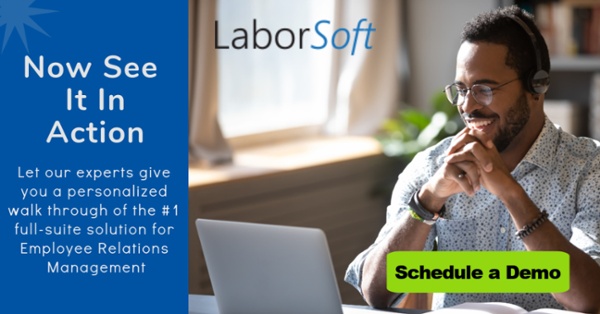4 HR Best Practices For Navigating the Union Grievance Process
Read Time 3 mins | Nov 13, 2023 | Written by: Frankie Kourtis

Employers naturally seek to limit grievances. The grievance process can impact morale, productivity, finances, and more. However, labor union activity is now at its highest point since 1965. The U.S. is seeing a noticeable increase in strikes and a 58% increase in union election petitions.
Despite the best intentions, it’s inevitable that labor union grievances will eventually arise. When they do, care must be taken to handle them properly. Explore the best practices below to find a resolution with the fewest possible complications.
What Is a Union Grievance?
HR professionals who are new to a unionized environment may wonder, what is a grievance in labor relations? In a non-union organization, HR is generally familiar with what it takes to address employee issues and resolve internal grievances. The union grievance process, though, shows the fundamental differences between employee relations and labor relations.
The burden shifts from HR to the union itself to represent employees’ interests whenever a union is involved. At this point, HR must approach union communications with care to best represent the company’s interests and good faith as both sides seek to reach a remedy.
The collective bargaining agreement (CBA) will specify a procedure for each step of the grievance process, with increasing levels of escalation if no agreement is reached. The first step is to determine if the grievance is valid. After that, both sides will attempt to reach a resolution through discussion. If necessary, this can escalate to an arbitration process, at which point an external arbitrator will be appointed to decide the resolution.
Best Practices For Resolving a Labor Union Grievance
It’s always best to avoid a grievance. When this is not possible, follow the best practices below.
1. Avoid an Adversarial Stance
It’s always important to treat a grievance as if it will go to arbitration (so you are prepared for that eventuality). However, never take an adversarial approach. Allow employees and union reps the opportunity to present their perspectives. Be reasonable, calm, and listen actively, without interrupting. Never underestimate the power of body language. You may be looking for clues about what the union is likely to do, and they’ll be paying attention to your demeanor as well.
The most productive environment for resolution will be respectful and collaborative, encouraging each side to openly express their concerns, perspectives, and needs. Avoid laying blame or engaging in personal attacks. Good faith may help you to find common ground and reach a mutually beneficial solution.
2. Take the Long View
This grievance is just one event. Others are likely to occur over a long enough window of time. Is this grievance part of an ongoing pattern? When the same issues arise time and again, you can reasonably expect that this won’t be the last time — unless something fundamentally changes.
What happens in this grievance can inform future negotiations on a new collective bargaining agreement. Don’t get lost in short-term thinking about reaching a resolution and lose sight of any precedent it may set, which you might regret in your next union contract negotiation.
By the same token, remember that CBAs are enforced as they are written. Even if you recall the union suggesting that certain CBA provisions wouldn’t apply in situations such as the grievance in question, understand that it’s the precise language of the CBA that takes precedence.
3. Be Timely
Closely observe all time limits and other procedural necessities according to the process outlined in the CBA and relevant rules or legislation. Every step will have a time limit. Do not make any effort to strategically delay the investigation process, as arbitration will look poorly on any delays that do not have clearly documented reasons and forewarning that is acknowledged by both sides.
4. Document Everything
Documentation is paramount. Even before the grievance process begins, ensure you know the full background of the case, have reviewed records of previous cases that were similar (and their outcomes), and have documents on hand with all applicable provisions of the CBA, company policies, and relevant workplace practices.
During discussions, make sure to ask questions regularly and keep detailed and accurate records of:
- Pertinent payroll, personnel, or disciplinary documents
- Accurate summaries of the employer, employee, and union positions
- Names and statements of all relevant parties/witnesses
- Evidence presented by either side
- All pertaining who/what/when/where/why details
Legible handwritten notes are a start. Well-organized digital files in a comprehensive labor relations software solution are better. Software purpose-built for labor relations grievances will help you keep everything organized, improve communication, and ensure efficiency and accuracy in the union grievance process.
If you are looking for an end-to-end case management solution for union grievances, schedule an online demo of LaborSoft and discover how our user-friendly, cloud-based software tools keep the process on track.


